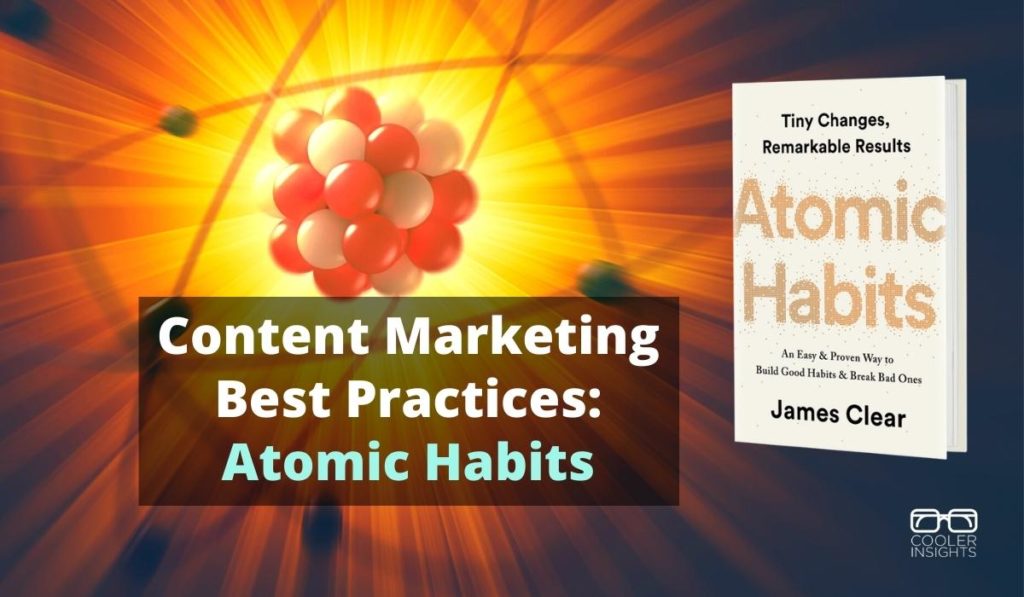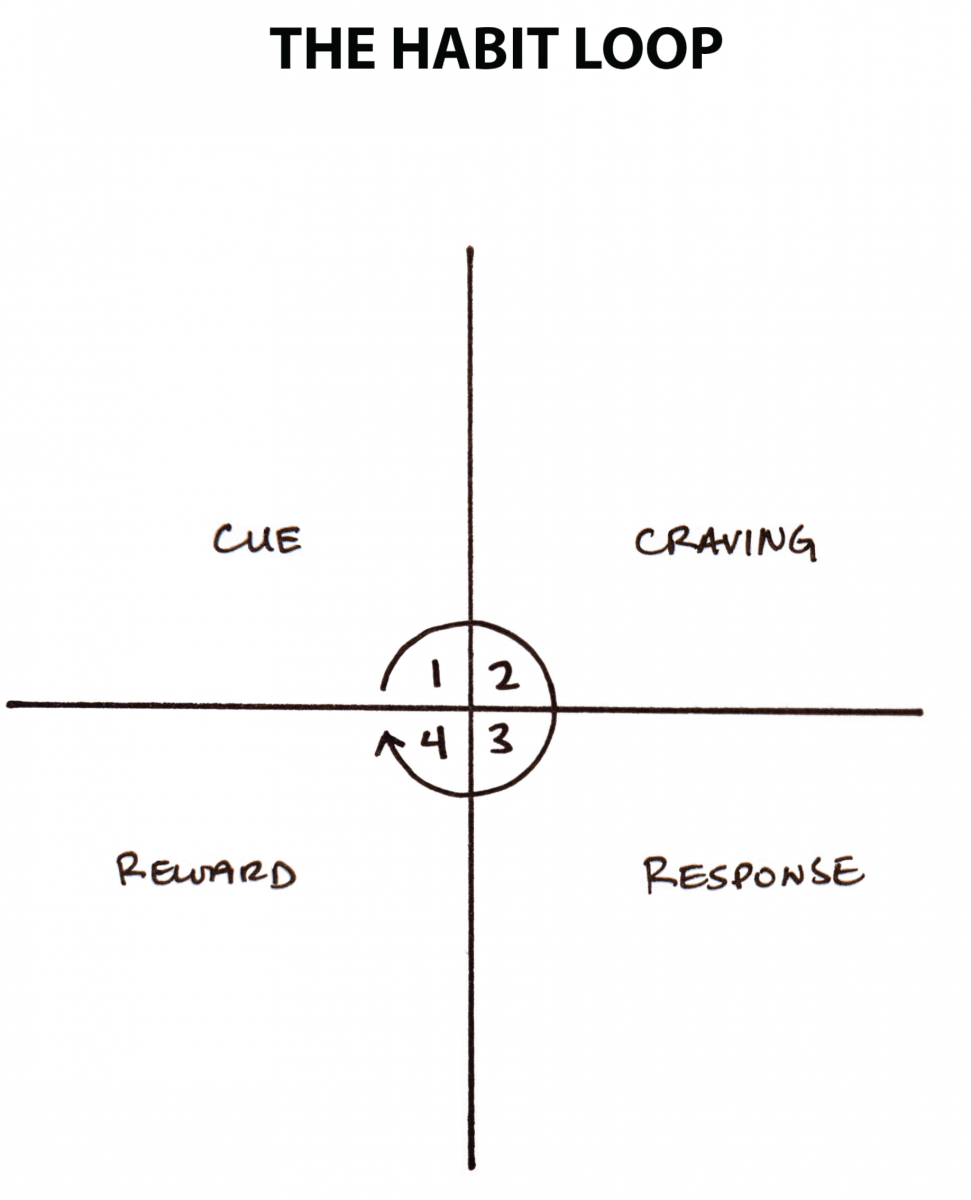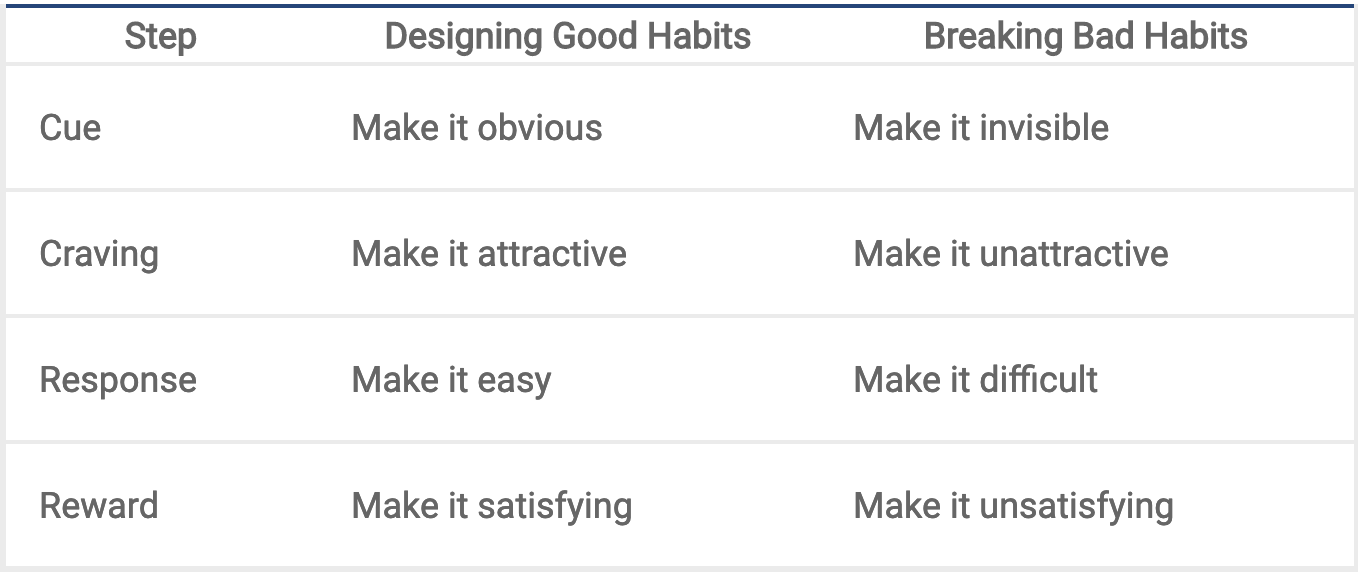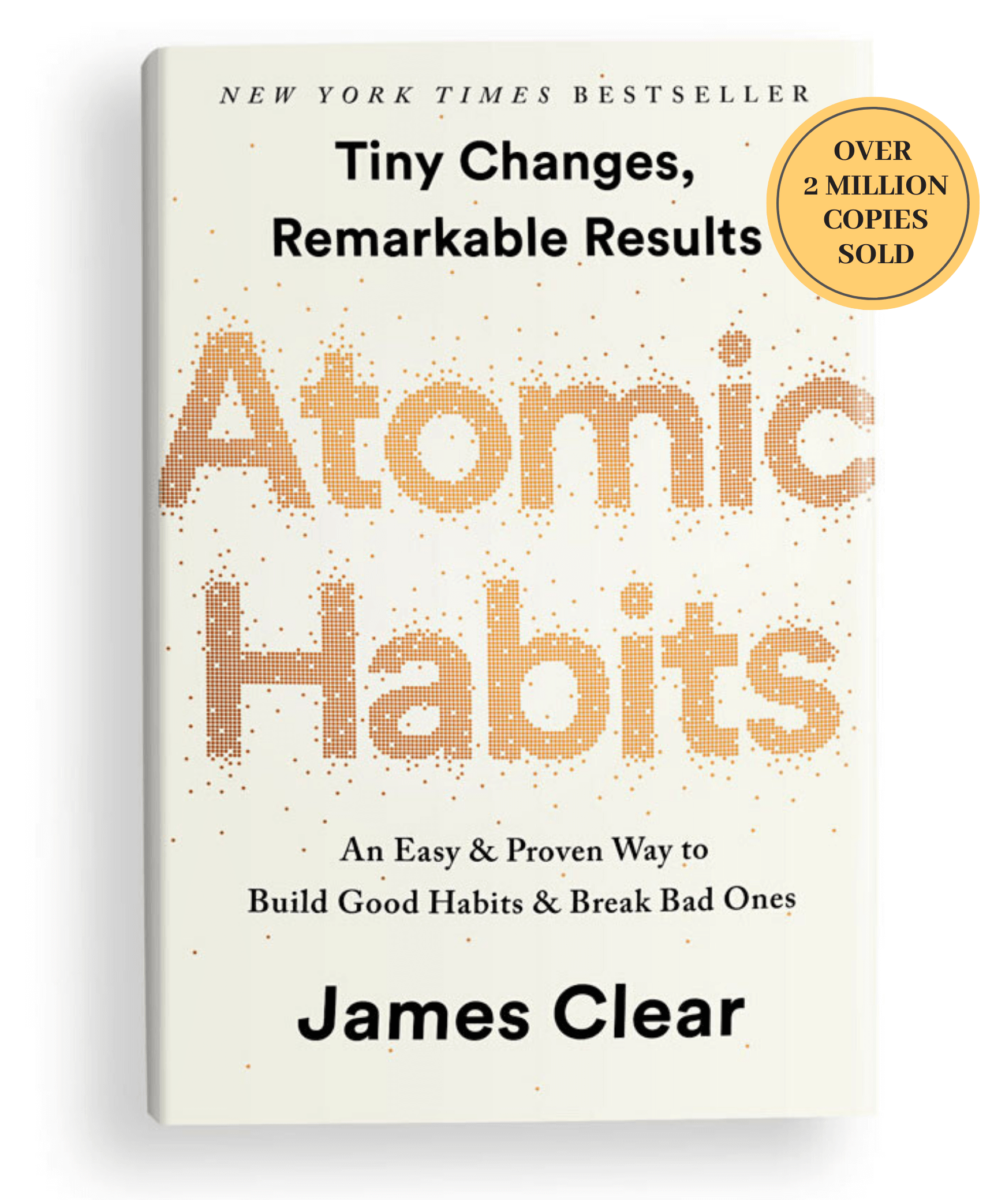
Content marketing success doesn’t lie in setting audacious goals. Or taking massive action.
Rather, it depends on your ability to consistently show up, build the right content marketing systems, and implement structured content habits.
But what steps can you take to improve your content marketing practice?
Introducing atomic habits—a concept taught by James Clear in his bestselling book Atomic Habits: Tiny Changes, Remarkable Results.
In this article, you will learn the following core principles taken from the book that can strengthen your content marketing practice:
- Why Continuous Improvement (1% Rule) is so important in Content Marketing
- How You Can Build Robust Content Marketing Systems
- How You Can Make Content Production a Regular Habit
- What You Can Do To Implement Your Content Production Habit
While these lessons are ideal for entrepreneurs who need to DIY their content marketing, they can also apply to large companies wishing to ingrain content marketing into their corporate DNA.
#1 Why The 1% Rule (aka Continuous Improvement) Rocks
“It takes 20 years to make an overnight success”—Eddie Cantor
Rome wasn’t built in a day. Neither were the most successful brands in content marketing.
To achieve success in your content marketing practice, you’ll need to take the long-term view.
Do it brick-by-brick. Aim to be slightly better each week with the different types of content you produce—articles, videos, social media posts, infographics, reels, stories, landing pages, emails and others.
If you improve by 1 percent every day for a year (365 days), you can be a staggering 37 times better by the end of the year, as shown by James Clear’s chart below.

Courtesy of James Clear
This illustrates the power of compounding.
(Conversely, if you slide by 1 percent every day for an entire year, you’ll end up being only 0.03 or 3 percent of your original state!)
How to be One Percent Better Every Time
To achieve incremental gains that compound over the long-term, here’s what you need to do:
- Study Small Data: Measure your content marketing success at the micro-level—track the performance of every post, every article, every video, and every email
- Make Tiny Adjustments: Implement small changes to improve your content piece’s performance based on the insights from your data
- Document Lessons: File what you’ve learned periodically, and include them in your briefs to your content team
- Iterate Frequently: The best way to continually improve is to continually produce and share content. Use each content piece as an experiment—throw it out and see how it performs. (Read my article on The Lean Startup to learn an agile marketing process.)
#2 How to Build a Content Marketing System

Which matter more? Setting the right goals or building the right systems?
For the longest time, many of us are inculcated with the importance of goal setting, envisioning our success, and taking “massive action” to achieve massive gains.
But James Clear has a different view of this—one which I personally subscribe to.
Quoting from this article:
“The goal in any sport is to finish with the best score, but it would be ridiculous to spend the whole game staring at the scoreboard. The only way to actually win is to get better each day. In the words of three-time Super Bowl winner Bill Walsh, “The score takes care of itself.” The same is true for other areas of life. If you want better results, then forget about setting goals. Focus on your system instead.”—James Clear
Thus, while it is necessary to have clear goals in content marketing, you’d probably do better if you have a systematic process for implementing content marketing in your organisation.
How to Build a Successful Content Marketing System
So how do you build and implement a successful system for content marketing?
For this, I’d like to recommend that you adopt the 5 P Strategy to Content Marketing:
- Plan—Do not just leave your content production efforts to chance. Schedule content tasks and put it in your calendar.
- People—Ensure that you have the right team of people to create content on a regular basis. And if you’re doing it yourself, seek to surround yourself with others who can nudge you to do so.
- Process—Stick to a regular routine and process for content ideation and content creation. Here’s one way to endlessly create content which I personally adopt.
- Place—Find an ideal location for your content work. Minimize distractions if you can, and make it sacrosanct—even if its in your home!
- Practice—Embrace the philosophy of deliberate practice, and continuously improve your content pieces with each piece that you roll out.
#3 How You Can Make Content Production a Habit
Before I introduce James Clear’s system and adapt it for content marketing, let us first look at the Habit Loop.
This is segmented into four stages as shown in the diagram below:

Courtesy of James Clear
1) Cue
The cue is the trigger which initiates your behaviour. According to James, there are five main cues as outlined here:
- Time—What’s the first thing you do when you wake up in the morning? Or go to sleep at night? Different timings trigger different behaviours according to our daily rhythms
- Place—This is the environment you’re in. To many, work correlates with a specific building or office. Hence, separating work from leisure can be difficult when you work from home.
- Event—Also known as the preceding event, these are the chain of activities which precedes a behaviour. For instance, putting on your workout attire before you run.
- Emotions—Often, how we feel will determine how we behave. However, using emotions to determine what you’ll do next can be iffy and finicky.
- People—You’ve probably heard of the saying that you’re the average of the five people you spend the most time with. This works equally true in any endeavour—including content marketing!
2) Craving
Cravings are the next step of the habit loop. They provide the motivating force behind every one of your behaviours.
What you crave isn’t the habit itself but the after effects of the habit. This is the change in state which an action that you take delivers.
3) Response
This is the actual action that you take whenever you see the cue and experience the craving. It may be a thought or an action.
Your behaviour here is determined by the degree of your motivation and the amount of friction. The more effort needed to take an action, the less likely you are to do it.
4) Reward
Finally, the reward is the actual gratification you get when you complete the habit.
Thus, the cue happens when you notice the reward, while the craving is your desire for the reward. Your response is the action you take to get the reward.
We chase rewards because they serve two purposes: (1) they satisfy us and (2) they teach us.
How to Instill the Right Content Marketing Habits?
Now that you’ve learned how habits (good or bad) happen, your next step is to take the right actions to develop good content marketing habits.
To do so, you should implement the four laws of behaviour change.
🎱 Make it Obvious—Set Right Cues
Create the right environment to produce content on a regular basis.
Wish to read more? Leave your books on the table.
Wish to write more? Have a pen and notepad on your kitchen table. Or include a regular time-slot on your smartphone calendar to buzz you each morning.
😋 Make it Attractive—Evoke Right Cravings
If writing a long article or filming a video appear daunting to you, find a way to involve your family, friends and colleagues.
Make it a fun activity. Or set a challenge with your team members, with a prize for the winner.
⛸️ Make it Easy—Reduce Friction
Design your work-from-home space with you need within reach. For example, a calendar or work planner that marks out what you need to do today.
Or automate your content production tasks if possible, so that it becomes a ritual. This can be done by block-booking time on your calendar for content production.
If you need to do videos, set up your tripod and your ring lights so that they’re always primed and ready to go. Do not stack and hide everything—remember the saying “Out of sight, out of mind!”
👍🏻 Make it Satisfying—And Rewarding
This should be tied back to tracking your milestones in content production. You can perhaps log in the number of hours spent writing an article. Or the number of videos produced each week.
Another way to make it rewarding is to have accountability partners and mini-milestone celebrations.

#4 How to Implement a Positive Content Production Habit
OK, so you’ve designed the right systems and identified the right strategy to make your content production habit obvious, attractive, easy and satisfying.
Your next step is to programme yourself to take the right steps when temptation beckons. This is where implementation intentions come to play.
Want to ensure that you can achieve your goals through the right habits? Consider these two techniques.
a) Implementation Intention Formula
Use the Implementation Intention formula:
“When situation X arises, I will perform response Y.”
Associate a specific behaviour with a specific time and location. Set the right contexts for the right behaviour by using this formula:
I will [BEHAVIOR] at [TIME] in [LOCATION]
If we apply it to content marketing, these “mantras” can look like this:
- I will listen to a thought leader’s podcast episode for 45 minutes at 7 a.m. as I’m doing my daily walks in the estate
- I will write for an hour at 8 am in my study every weekday morning
- I will read a relevant book for one hour at 9 p.m. in my bedroom before I sleep each day
- I will go live on Facebook every Thursday evening at 8 pm from my living room
b) Habit Stacking
The other option is to use your existing habit cues to ignite a subsequent behaviour. This is what James Clear calls habit stacking. Or as he puts it…
“One of the best ways to build a new habit is to identify a current habit you already do each day and then stack your new behavior on top.”—James Clear
So how do you do so? Use the habit stacking formula as follows:
“After/Before I [BEHAVIOUR] at [TIME] and [PLACE] I will do [DESIRED HABIT]”
Here are some examples of how you can use this to make content production a habit:
- After I have my coffee in the morning, I will spend 30 minutes listening to my trade-specific podcast
- After I have listened to the podcast, I will jot down the 5 major learning points from the podcast on my smartphone
- After I have jotted down the 5 learning points from the podcast, I will file it away to be worked on at night
- Before I sleep at night in my bedroom, I will spend 30 minutes reading on my armchair in the study
And so on and so forth…
Conclusion
Content marketing often fails because of poor execution rather than a bad strategy.
To prevent this, consider adapting the golden principles in Atomic Habits to the field of content marketing.
Make content marketing a regular part of your day, and embrace the principles of continuous improvement, building systems and processes, and priming your behaviours to the right content habits.
And yes, you should definitely get a copy of the book Atomic Habits. It will give your content marketing practice a powerful nuclear boost!

